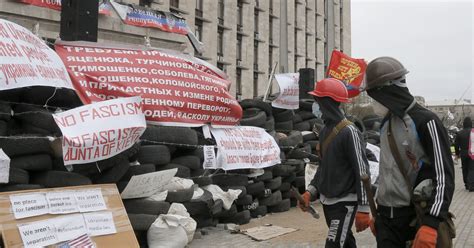For years, Ukraine has been in the crosshairs of Russia’s propaganda machine. The narrative woven by Russian disinformation aims to sow discord, fragment Ukrainian society, and diminish its identity while elevating Russia as a superior entity. This insidious campaign set the stage for the annexation of Crimea and the invasion of Ukraine in 2014. But Russia’s efforts didn’t stop there; they continued to stoke division within Ukrainian society, denying their military presence on Ukrainian soil and deflecting blame for Crimea onto Ukraine.
As we delve deeper into this complex web of misinformation, it becomes evident that Russia’s strategic goal is to create a distorted image of Ukraine that serves its political agenda. By portraying Ukraine as a
“failed,”
“corrupt,”
or
“externally controlled”
state, Russia seeks to undermine international support for Ukraine and legitimize its aggressive actions in the eyes of global audiences. This deliberate misrepresentation also aims to erode unity among European countries backing Ukraine by promoting narratives like
“Ukraine fatigue”
and questioning the effectiveness of aid.
Moreover, Russia extends its influence beyond European borders, particularly targeting African countries with tailored disinformation campaigns. In Africa, Ukraine is painted as a key player in a
“Western colonial conspiracy,”
accused of exacerbating poverty and destroying traditional values. These false narratives seek to bolster pro-Russian sentiments, weaken trust in Ukraine and its allies, and justify Russian aggression under the guise of historical justice.
In dissecting how Russian propaganda shapes perceptions about Ukraine across different continents, it’s crucial to understand the evolving nature of these narratives. Initially branding Ukraine as Nazi sympathizers during the early stages of conflict evolved into portraying them as financially burdensome, corrupt entities incapable of upholding democratic values or achieving victory in war. These manipulative messages aim to sway public opinion against supporting Ukraine while reinforcing negative stereotypes.
The impact of Russian disinformation stretches far beyond fabricated headlines; it has real-world consequences that can erode international solidarity with Ukraine and distort perceptions about the ongoing conflict. In Africa specifically, where misinformation is strategically tailored to local contexts, false narratives about Ukraine being complicit in global power plays further complicate efforts to garner support for Ukrainian sovereignty.
To counteract these damaging falsehoods perpetuated by Russian propaganda machinery requires a concerted effort towards strategic communication that debunks myths surrounding Ukrainian involvement in conflicts abroad while highlighting their cooperation with Global South nations. Recognizing the insidious nature of disinformation campaigns is essential in safeguarding against future targets while preserving truth and integrity in journalism.
As we navigate this intricate landscape shaped by competing narratives and hidden agendas, it underscores the critical role credible journalism plays in exposing falsehoods and upholding journalistic integrity amidst a sea of misinformation.
Olha Bilousenko’s insightful analysis sheds light on the multifaceted layers comprising Russia’s manipulation tactics aimed at reshaping global perceptions about Ukraine through deceptive storytelling strategies.

